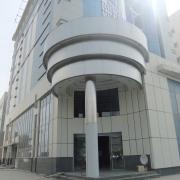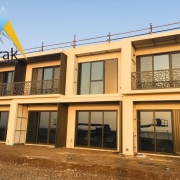Metal facades have become a key element in modern architectural design, combining aesthetics, durability, and functional efficiency. With continuous technological advancements, new techniques have emerged in designing and installing these facades, improving thermal performance, enhancing sustainability, and providing innovative solutions that meet the needs of contemporary architecture. In this article, we will explore the latest techniques in the design and installation of metal facades and their role in advancing modern construction.
The Importance of Metal Facades in Architectural Design
Metal facades are known for their lightweight properties, corrosion resistance, and ease of maintenance, making them ideal for residential, commercial, and industrial buildings. These facades offer a high degree of design flexibility, enabling architects to create innovative concepts while enhancing energy efficiency and environmental sustainability.
Latest Design Techniques in Metal Facades
1. Computer-Aided Design (CAD) and Building Information Modeling (BIM)
Software tools like CAD (Computer-Aided Design) and BIM (Building Information Modeling) have become essential for designing metal facades. These technologies allow designers to create precise 3D models and simulate facade performance before execution, reducing errors and ensuring design efficiency.
2. Dynamic and Responsive Facades
This technique allows for the design of facades that adapt to varying environmental conditions. For example, metal facades can feature panels that adjust their angles based on sunlight intensity, improving cooling efficiency and reducing energy consumption.
3. Nanotechnology in Finishes
Nanotechnology has revolutionized metal finishes by providing nano-coatings that protect surfaces from corrosion, dirt, and environmental elements while offering self-cleaning properties. This innovation extends the lifespan of facades and reduces maintenance costs.
4. Advanced Parametric Design
Parametric design allows for the creation of intricate geometric patterns tailored to project requirements. This technique facilitates the development of unique facades featuring 3D patterns that provide shading and ventilation, merging aesthetics with function.
5. Smart Facades
Smart facades integrate advanced control systems for lighting and ventilation using sensor technology. These systems automatically respond to environmental changes, enhancing user comfort and reducing energy consumption.
Latest Installation Techniques in Metal Facades
1. Modular Systems
This technique involves manufacturing facade units in a controlled factory environment and assembling them on-site. Modular systems reduce construction time and ensure higher quality due to precise manufacturing processes, independent of on-site conditions.
2. Snap-In Systems
Snap-in systems enable faster installation of metal facades without the need for extensive welding or multiple fasteners. Panels can be easily connected through pressure-based locking mechanisms, saving time and effort.
3. Double-Skin Facades
This technique uses two layers of metal facades with an air gap in between, improving thermal and acoustic insulation. The air cavity helps regulate temperature, enhancing energy efficiency and indoor comfort.
4. Hidden Fixing Systems
Hidden fixing systems provide a sleek and seamless facade appearance by concealing the fastening points behind the metal panels. This technique enhances the visual appeal and modernity of the facade design.
5. Robotic Installation
Modern technology has introduced robotics into facade installation processes, increasing precision and reducing construction risks. Robots can handle heavy panels and work in hard-to-reach areas, improving safety and efficiency.
The Role of Sustainability in Metal Facades
1. Material Recycling
Aluminum and steel are 100% recyclable, making them eco-friendly materials. Using recycled metals reduces carbon footprints and meets sustainability goals in construction projects.
2. Energy Efficiency
Thermal insulation technologies in metal facades help reduce energy consumption for heating and cooling. These solutions include composite panels with insulating layers or enhanced thermal materials.
3. Eco-Friendly Facade Design
Metal facades now incorporate features like integrated solar panels that generate electricity, reducing reliance on traditional energy sources and promoting sustainable building practices.
Conclusion: The Future of Metal Facades
Modern design and installation techniques in metal facades represent a significant leap forward in architectural engineering. By integrating technology and creativity, innovative designs can be achieved that combine beauty, efficiency, and sustainability. With continuous advancements, Arak Shadow Company remains committed to delivering cutting-edge solutions that align with global trends and future aspirations.












Leave a Reply
Want to join the discussion?Feel free to contribute!